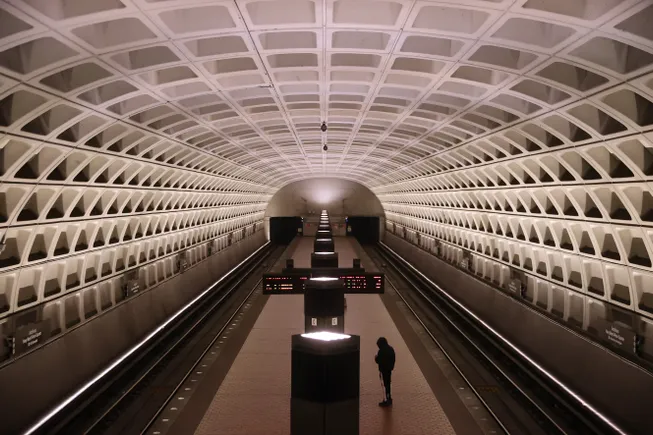Sami Soufi is vice president and program manager for rail and transportation at Mt. Laurel, New Jersey-based program management firm Hill International. Opinions are the author’s own.
My first exposure to alternative delivery infrastructure projects was in the mid-90s, when I worked as a structural engineer on the design-build of Corridor-H highway project in West Virginia. Since then, AD has evolved in its models and complexity.
Prior to AD, owners primarily relied on the design-bid-build delivery model. On DBB projects, owners often used “prescriptive specifications” during procurement, specifying design, materials and methods. But as owners pursued faster project delivery, they began procuring projects based on “performance requirements,” i.e., by specifying how they would like the delivered asset to function. This has driven AD’s evolution.
Today, there are three AD models widely recognized for construction contracting:
1. Construction manager at risk: In CMAR, also known as construction manager/general contractor, the owner contracts separately with the design consultant and the construction manager. The CM works with DC and provides estimating services during procurement.
The parties agree on the final scope, price and schedule afterwards. A guaranteed maximum price reduces the owner’s risk. However, this delivery method requires unique contractor expertise, and the availability of such expertise can constrain CMAR project delivery.

Sami Soufi
Permission granted by Hill International
2. Design-build: In DB, the owner selects a design-builder based on the best value proposal for approach, design, construction and price. This is a two-step approach, which adds time to procurement. The DB also has a minimal interface with the owner during design development and assumes the whole risk of delivering the project at the agreed-upon price. This reduces risk but increases upfront costs for the owner.
3. Progressive design-build: This is a one-step, qualifications-based procurement with two main phases. This allows the owner, and possibly stakeholders, to be substantially involved with the PDB contractor during design development, with no contract commitment to the owner until an agreed-upon level of design is completed. After selection, the owner and the PDB contractor collaborate to advance the design and construction within the “targeted cost and schedule.”
Since PDB is a one-step procurement, the owner saves on procurement time. PDB also has unique risks, such as the potential inability of the parties to come to terms at the end of the first phase or extend professional liability insurance. The use of a stipend to work with two bidders can mitigate these challenges.
Further, PDB is ideal for emergency procurements as evidenced by the Maryland DOT’s use of PDB for the reconstruction of the Francis Scott Key Bridge in Baltimore, which collapsed after being hit by a vessel in March 2024.
What’s the best option?
Selecting the optimum procurement method can be difficult. Local market conditions, availability of resources, local contractor experience and the level of risk that the owners or contractors are willing to take are all key factors.
Owners may have their own preferred AD model based on the prior success of that model on their own or a sister agency’s project. For example, the Washington Metropolitan Area Transit Authority used CMAR for the successful rehab of the Metro’s Yellow Line in 2022. This may have prompted Amtrak’s use of CMAR to procure construction packages for the Frederick Douglas Tunnel project in Baltimore.
Further, the supply chain pressures caused by the COVID-19 pandemic and the passing of the Infrastructure Investment and Jobs Act have increased the demand for materials, escalated material prices and constrained the availability of engineering and construction resources. This has increased contractor leverage, allowing firms to be more selective in bidding on projects.
Some large contractors have been able to negotiate better terms and even request upfront payments for mobilization and long-lead items, representing a major shift of risk to owners.
Contractors also have less appetite for risk. As top-tier contractors struggle to make profit on multibillion-dollar DB contracts, many firms are not willing to bid on projects exceeding $500 million without favorable terms.
A word about P3s
AD can help owners meet the public’s increased demand for transportation infrastructure, which can be constrained by regulatory approvals and/or funding. The financial feasibility of these projects has encouraged private equity firms to partner with public agencies to finance inadequately funded projects through public-private partnerships.
Strictly speaking, P3 is a funding mechanism, not an AD model. It relies on multiple private partners coming to an agreement to design, build and operate an infrastructure project on behalf of a public entity for a period called a concession. Because fast delivery is necessary on P3 projects, P3 teams procure these projects via AD, and the partnering firms often enter complex contractual relationships with the owner for the duration of a concession.
Examples of P3s include the construction of Express Lanes on I-66 and I-495 in Northern Virginia and the Purple Line light rail project in Maryland. When private firms contribute funds for public infrastructure projects, regulatory approvals and funding tend to be faster because of the projects’ perceived financial feasibility. I expect this trend to continue.

